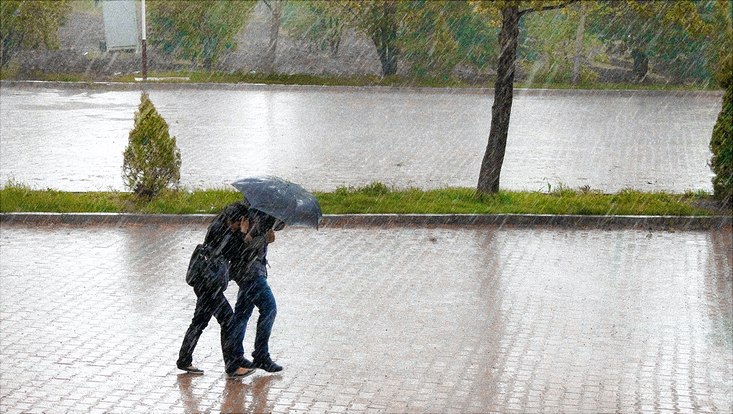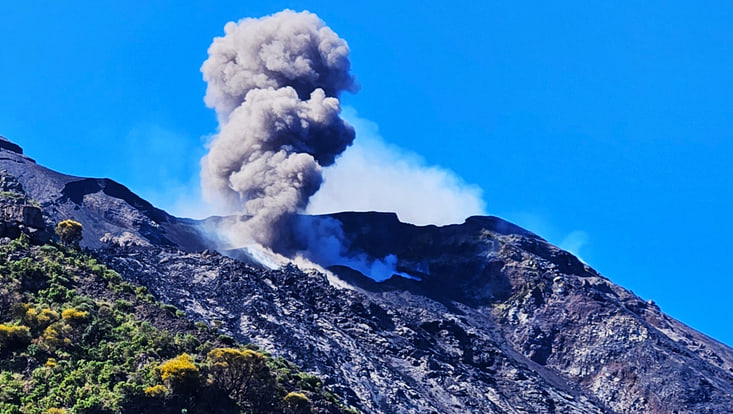Adapting to Climate Change: Cities Will Have to Fundamentally Transform
3 January 2023, by Dr. Franziska S. Hanf

Photo: Unsplash/ Atilla Bingöl
During heavy rainfall events, when a certain amount of rain is exceeded in just a short time, cities can face challenges of urban flood risk. However, this depends not only on the amount of rainfall, but also on the land’s ability to deal with this water: how absorbent is the urban soil? Is the surface sealed? Are there plants that can slow down surface runoff ? Are there differences in elevation, and if so, where does the water flow to and accumulate? The capacity of the sewer system is another important aspect.
In addition, whether a heavy rain event turn into an emergency or even a disaster also depends on a number of societal factors. For example, how well informed citizens are about risks and measures to avoid them, e.g. by rearranging or redesigning their property accordingly. Efficient rainwater management can store rainwater and prevent rapid surface water runoff . In order to create new retention areas and to implement unsealing measures, political decisions have to be made – including those that require a fundamental redesign of public space. For example, by giving water more space in the city and embedding water management infrastructures in public space.
In the Cluster of Excellence “Climate, Climatic Change, and Society” (CLICCS) at the University of Hamburg, we investigate climate risks and urban adaptation not just from a meteorological but from a holistic perspective, for instance for the case study of the city of Hamburg. Together with stakeholders, we assess how sustainable certain adaptation measures are, but also how complex and how likely it is that these will be accepted. How plausible is it that these measures will actually be implemented? How is the willingness to support them? Can and will the city afford these measures?
But adaptation to climate change is a wicked problem. Unlike physical problems, societal behavior can’t be precisely calculated and integrated into a computer model. For example, the frequency of heavy rainfall events has disproportionately increased in the greater Hamburg area. However, that doesn’t automatically mean that more unsealing measures will take place, or that retention areas to catch the rainwater will be constructed. These decisions tend to depend more on whether funding will be allocated, how much time it would take to implement new measures, and whether politicians are under pressure to act. This can happen, for instance, if damage and associated losses become more frequent and expensive, as a result of new scientific findings, or if more and better information is provided about possible risks.
With my colleagues, I am therefore currently working on a so-called qualitative system dynamics model of the urban system focusing on adaption to climate change. This conceptual model enables the visualization of the causes and relationships between the individual components of the urban system and thus the identification of possible feedbacks in the system. In fact, it is not so much about individual phenomena, but about how the system works as a whole – whether and how different processes reinforce, dampen or cancel each other out. This type of analysis can only be done in an interdisciplinary team. Each of us is an expert in a certain field: hydrology, soil science, the social sciences, political science, law, urban planning, economics, or meteorology. Our common goal is to identify the crucial levers that enable sustainable adaptation to climate change.
So far, research has shown that it is essential to focus on effective leverage points that may be less obvious at first glance, but which aim at system-wide change. It’s become clear that something as complex as climate adaptation can only be successfully addressed by getting all actors involved – water management, urban planning, politics and the public – on board. The integrated approach of a water sensitive city represents the first step in the right direction.
More Information
Dr. Franziska S. Hanf is a climate physicist working on climate adaptation in urban systems. She is currently a senior postdoc in the project “Water from four sides” of the Cluster of Excellence “Climate, Climatic Change, and Society” (CLICCS) at the University of Hamburg.
Newspaper: This article was first published as a guest article in the Hamburger Abendblatt as part of a monthly series on climate research. Find all articles of the series here.


